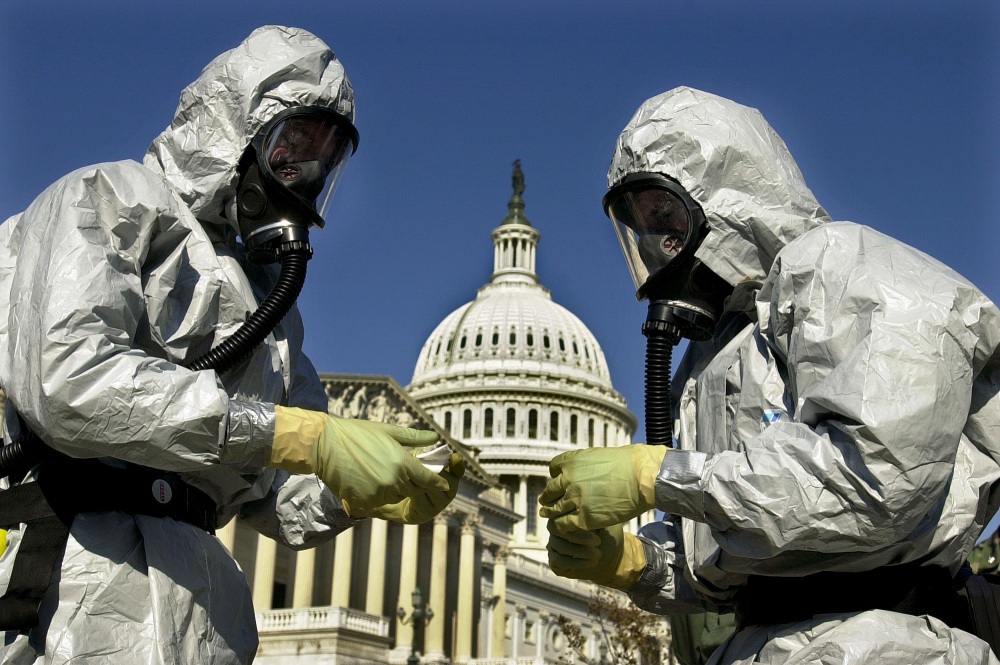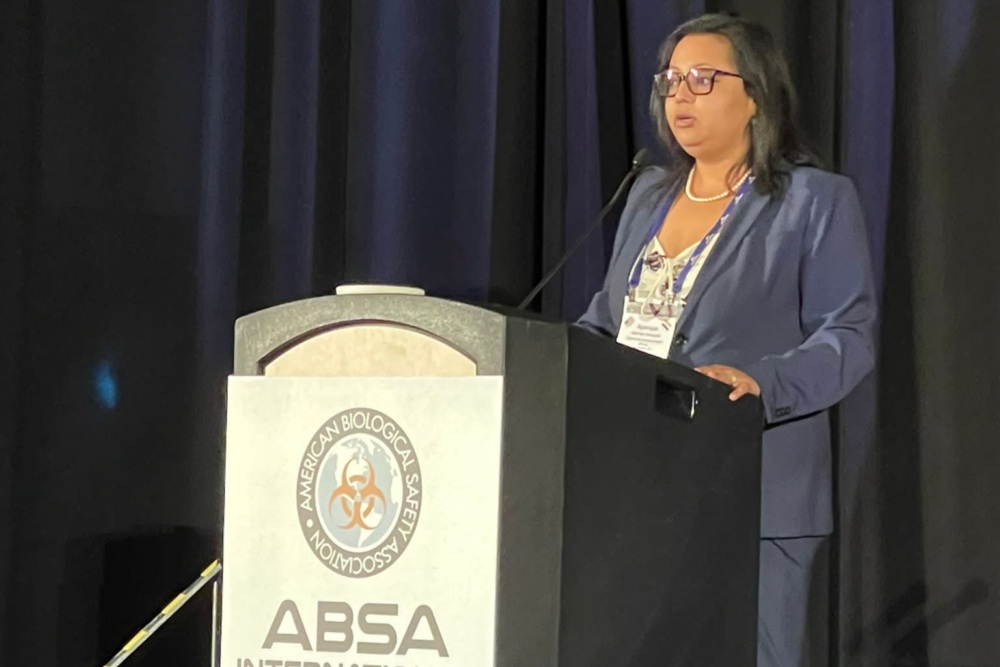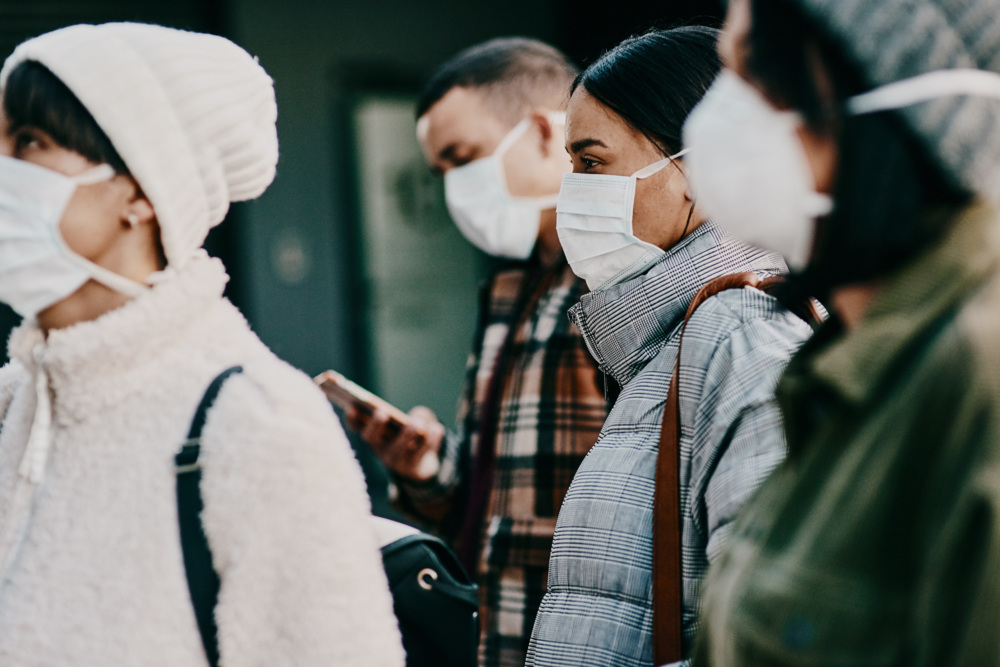
Jacob H. Eckles
Senior Program Officer, Global Biological Policy and Programs
Atomic Pulse
Less than a month into its assault on Ukraine, Russia’s disinformation campaign about the country’s public health and veterinary laboratories took hold on social media. As conspiracy theorists fanned the false claims that the biolabs were being used to build biological weapons, the world once again was subject to an all-too familiar effort by Russia to confuse, distract, and divide as part of a propaganda campaign, perhaps to justify a biological attack of their own.
Dr. Gregory Koblentz explored the phenomenon in a recent virtual NTI seminar: “The Danger of Disinformation: Understanding Russia’s Propaganda Campaign Against Ukrainian Biological Facilities.” One of the world’s foremost biodefense scholars working at the nexus of health, science, and security, Koblentz explored how Russia seeds the ground with disinformation to create doubt around Ukrainian laboratories and outlined solutions for how the world can prepare for and prevent this sort of dangerous diversion in the future.
Understanding the Narrative
Weaponizing disinformation is not new, particularly in the biological security space. As Koblentz noted, Russia has been using such tactics for decades. In the 2010s, Russia made similar claims about Georgian laboratory systems operating as bioweapon facilities with U.S. support. The efforts to sow distrust and discord stretches back into the Cold War as well, with Russia suggesting that the HIV epidemic was a cover for U.S. bioweapons programs gone wrong.
In all these cases, legitimate public health collaborations were unjustifiably called into question, and the lies were levied for political purposes. Koblentz offered a framework for understanding the Russian playbook for disinformation, which can be broken down into seven areas: distort, deceive, deny, deflect, dismiss, divide, and distract. In total, he said, these make up the “firehose of falsehoods” and work to sow outrage that eventually fades to apathy and inaction.
The disinformation is being used across multiple audiences. While Russia does push information internationally and it is picked up by the news media and influential figures in the United States and elsewhere, much of the misinformation is designed to amplify and validate these claims within their own borders. This strategy has the dual impact of solidifying regime support and “believability” at home, while sowing discord and doubt abroad as part of an effort to weaken national resolve and commitment to action.
But what can be done? Will the world be perpetually subjected to the “firehose of falsehoods” as Koblenz called it?
In short, the answer is no. But the problem is difficult and finding solutions will take time and require intense, multisectoral collaboration to ensure the world is better prepared with better stories to counter these false narratives.
Telling a Better Story
To prevent disinformation from becoming an effective weapon, Koblentz outlined four key areas for action:
Existing institutions, such as the United Nations and the World Health Organization, have an important role to play, Koblenz said. They must focus on getting out in front of the firehose and train experts on what to expect, arm them with information, and prepare them with education and training to counter these narratives.
But they cannot do it alone. Civil society and the private sector have a large role to play in ensuring the world is better prepared to handle false claims and threats. Audience members highlighted actions civil society can and are taking to combat the spread of vagaries and falsehoods in the biological security space, including Russian disinformation.
Two NTI projects included in discussion offer examples of how non-governmental entities can be constructive partners in countering these narratives and building stronger systems that disempower falsehoods.
Watch a video of the NTI Seminar with Dr. Koblentz here.
Sign up for our newsletter to get the latest on nuclear and biological threats.
Are Countries and International Organizations Prepared for a Bioterrorism Event?
NTI | bio Senior Program Officer Dr. Aparupa Sengupta on why efforts to strengthen global biosafety and biosecurity must prioritize diversity and inclusion.
NTI is working with international partners to develop a new Joint Assessment Mechanism (JAM) within the office of the UN Secretary-General to rapidly identify outbreak origins. Without the ability to quickly determine the origin of an outbreak, researchers are hampered in their ability to rapidly develop vaccines and other medical countermeasures that can slow the pace of the outbreak, ultimately saving countless lives.


